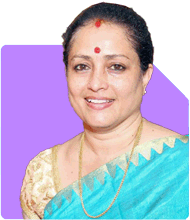Ramalingam Kalirajan |6213 Answers |Ask -Follow
Mutual Funds, Financial Planning Expert - Answered on Jul 19, 2024
He has an MBA in finance from the University of Madras and is a certified financial planner.
He is the director and chief financial planner at Holistic Investment, a Chennai-based firm that offers financial planning and wealth management advice.... more

Hi I am 38y salaried. I have been investing in MF since 2020 and have 1lac sip 45%smcap, 35%flex cap, 15% midcap. Total portfolio 45lacs till now. Also other MF portfolio lumpsum is 36lac. FD 30lacs. I am planning to move my fds into mfs. Current exp 1lac pm. I have home loan free. Want to plan for my 8yr kid for higher edu 1.5 cr and retirement. I would like to retire at 50. Want to know how much corpus needed for edu n retirement n what changes required in current portfolio.
Current Financial Overview
Monthly SIP: Rs 1 Lakh
Small Cap: 45%
Flex Cap: 35%
Mid Cap: 15%
Mutual Fund Portfolio: Rs 45 Lakh
Other Mutual Fund Investments (Lumpsum): Rs 36 Lakh
Fixed Deposits: Rs 30 Lakh
Monthly Expenses: Rs 1 Lakh
Home Loan: None (Debt-Free)
Education Planning
Goal: Rs 1.5 Crore for your child’s higher education.
Time Horizon: 8 years
Investment Strategy:
Current Allocation: Your mutual fund portfolio is well-diversified with a focus on small, mid, and flex caps.
Future Investment: Moving FD amounts into mutual funds can enhance growth potential. Consider allocating to equity-oriented funds for long-term growth.
Monthly Investment: Increase SIPs or invest lumpsum periodically based on market conditions to reach your goal.
Estimated Corpus:
Target Amount: Rs 1.5 Crore
Growth Assumption: With aggressive investments, your portfolio can potentially grow at a higher rate compared to FD interest rates.
Retirement Planning
Goal: To retire by age 50 with a corpus of Rs 6 Crore.
Investment Strategy:
Current Allocation: Your mutual fund investments are already well-positioned for growth.
Adjustment Needed: Moving FD into mutual funds is advisable for higher returns. Maintain a balanced approach with a mix of equity and debt funds for stability and growth.
Estimated Corpus:
Target Amount: Rs 6 Crore
Time Horizon: 12 years
Investment Required: With your current portfolio and by increasing your SIP or making lumpsum investments, you can work towards achieving this goal.
Recommended Changes to Portfolio
Move FD to Mutual Funds: Shifting FD to mutual funds can enhance growth potential, especially for long-term goals like retirement.
Rebalance Portfolio: Ensure that your mutual fund investments are diversified and aligned with your risk tolerance and financial goals.
Increase SIPs: If feasible, increase your SIP amounts to boost your retirement corpus and education fund.
Financial Goals and Strategy
For Education:
Monthly Investment: Consider setting aside a portion of the FD proceeds into a dedicated mutual fund for education.
Review Regularly: Adjust your investments as per market performance and financial goals.
For Retirement:
Increase Investment: Consider increasing your monthly SIPs or making occasional lumpsum investments.
Diversification: Include a mix of equity and debt funds to balance risk and returns.
Final Insights
Your current strategy of investing in mutual funds is sound. Moving FD into mutual funds can align with your goals for education and retirement. Ensure that your portfolio remains diversified and regularly review it to stay on track. Increasing your SIPs or making lumpsum investments will help achieve your financial goals effectively.
Best Regards,
K. Ramalingam, MBA, CFP,
Chief Financial Planner,
www.holisticinvestment.in
You may like to see similar questions and answers below
Omkeshwar Singh | Answer |Ask -Follow
Head, Rank MF - Answered on Sep 09, 2020
Omkeshwar Singh | Answer |Ask -Follow
Head, Rank MF - Answered on Aug 30, 2022
Ramalingam Kalirajan |6213 Answers |Ask -Follow
Mutual Funds, Financial Planning Expert - Answered on Apr 12, 2024
Ramalingam Kalirajan |6213 Answers |Ask -Follow
Mutual Funds, Financial Planning Expert - Answered on May 11, 2024
Ramalingam Kalirajan |6213 Answers |Ask -Follow
Mutual Funds, Financial Planning Expert - Answered on Jul 11, 2024
Dr Dipankar Dutta |527 Answers |Ask -Follow
Tech Careers and Skill Development Expert - Answered on Sep 03, 2024
Dr Dipankar Dutta |527 Answers |Ask -Follow
Tech Careers and Skill Development Expert - Answered on Sep 03, 2024
Dr Dipankar Dutta |527 Answers |Ask -Follow
Tech Careers and Skill Development Expert - Answered on Sep 03, 2024
Dr Dipankar Dutta |527 Answers |Ask -Follow
Tech Careers and Skill Development Expert - Answered on Sep 03, 2024
Nayagam P P |3601 Answers |Ask -Follow
Career Counsellor - Answered on Sep 03, 2024
Dr Karthiyayini Mahadevan |1057 Answers |Ask -Follow
General Physician - Answered on Sep 03, 2024
Dr Karthiyayini Mahadevan |1057 Answers |Ask -Follow
General Physician - Answered on Sep 03, 2024
Ramalingam Kalirajan |6213 Answers |Ask -Follow
Mutual Funds, Financial Planning Expert - Answered on Sep 03, 2024
Ramalingam Kalirajan |6213 Answers |Ask -Follow
Mutual Funds, Financial Planning Expert - Answered on Sep 03, 2024
Nayagam P P |3601 Answers |Ask -Follow
Career Counsellor - Answered on Sep 03, 2024
























